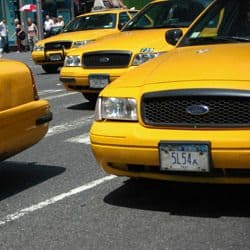An adjustable wrench? That’s not what I wanted.
If you were to send someone to the store to buy something for you, not tell them how much to spend or what to get, what do you think they would bring you? Auto on your camera is a bit like that.

Cameras have become much more advanced over the last few years, with face detection and Smart or Intelligent Auto systems that can evaluate the basics of the scene and make adjustments accordingly. These systems have come a long way to improving the results that we get when we need a simple point and shoot option for our picture-taking. The challenge that cameras face, even when using these advanced systems, is that they still don’t really know what YOU want. So, imagine telling that person on the errand to the store that you want a litre carton of 1% milk, and you give them a $5 bill to pay for it. How successful do you think they’ll be this time?
Can you hide my little wrinkles?
Now, if you look at your camera you aren’t likely to find an icon on the dial that looks like a carton of milk, but you will probably find a silhouette of a person, a mountain scene, a runner, and a flower. These are called Scene Presets, and they tell the camera to restrict itself to a certain type of photo situation. Portrait mode (the silhouette icon), for example, will tell the camera to soften the picture slightly (to hide wrinkles), adjust the saturation to create a pleasing skin tone, and adjust the depth of field (what is sharp or blurred in the picture, specifically the subject versus the background) to help make the subject more of the focus of the shot, and may enable the flash with Red Eye Reduction turned on.
Compare this setting to Landscape mode, which will adjust the picture to be sharper to help bring out the details in tree branches and blades of grass, bring up the saturation of blues for the sky and water and green for trees and grass, as well as disable the flash and allow for a slower shutter speed and increased depth of field so that more is in focus.
Think fast!
Moving on to some very helpful settings for more extreme situations, we have Sports mode (the runner), and Night Portrait (a person, with a star behind them), and Night Snapshot or Night Scenery (mountain with a star over it). Sports mode is the setting that is used for moving subjects. It doesn’t have to be sports, so don’t worry if you are using it to take photos of someone running to catch a double-decker bus in London, or to freeze the action at a busy intersection in New York. One of the key features of Sports mode is continuous shooting as long as you keep your finger on the shutter button. This means that you will have a few shots to choose from so that you get the best shot of the action. One key thing to note is that the flash will be disabled. The reason for this is that the flash takes time to recharge after each shot, and that slows the camera down, which is the opposite of what Sports mode is designed to do.
Night Portrait mode is great for those shots in the restaurant or on the boulevard, where you want a shot of your travelling companions or the Busker at the corner in Times Square. Unlike regular Portrait mode, this setting is designed to provide a slower shutter speed that will allow more available or ambient light to be part of the picture. Ambient light is the light from everything the flash does not reach, and it helps balance the scene (reduces the chance of a dark background with no detail, and a brightly lit subject that looks like a cardboard cutout of a person). Try this setting the next time you have a sunset behind your friend – the results can be awesome.
Night Scenery mode is like Night Portrait, but without the flash. If you are taking a scenery picture at night, or late in the evening/early in the morning without the aid of the sun then try this setting. It will disable the flash (you don’t want a dark photo with a brightly lit newspaper box in the foreground, do you?) and use a slower shutter speed to allow that all important ambient light in. Note: if there isn’t a Night Scenery or Night Snapshot mode you can use the Landscape mode for night shots without a person or close subject (if you did want the newspaper box to be the main subject, for example, then see Night Portrait mode above).
Variety is the spice of life.
Some cameras have an even broader list of modes to use. These can include Kids & Pets, Beach, Snow, Fireworks, Sunset, Sunrise, Food, etc. Each specific mode will set the camera up differently, helping to ensure that you get as close to the picture that you want as possible. All modes can be used creatively to achieve wild and wonderful pictures that you never thought of. So take the opportunity to explore your camera and try something new. You never what you’ll get when you say, “surprise me”.
Most of all, have fun and take lots of pictures.
Have a question about camera settings? Join the discussion…




